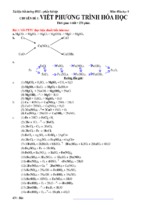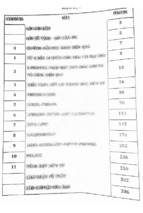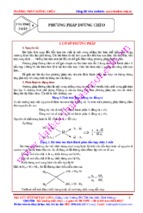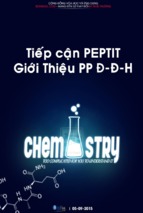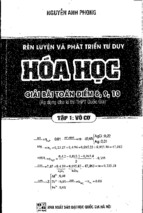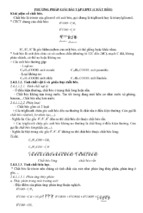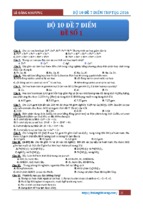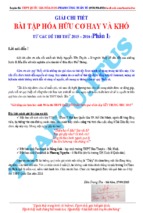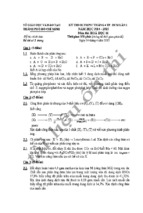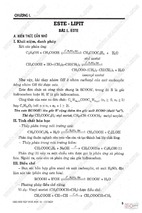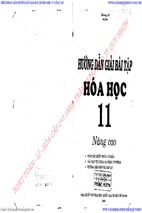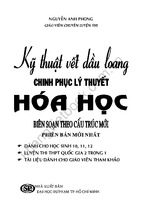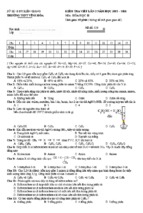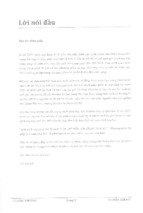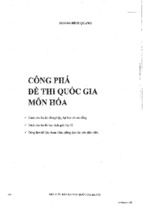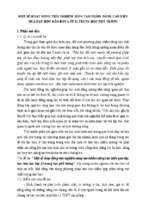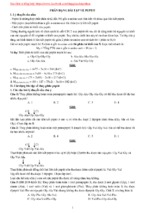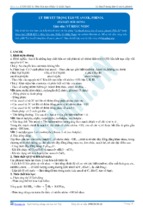Organic Chemistry 2nd 2014
David Klein
Student Study Guide
and Solutions Manual
Organic Chemistry
Second Edition
David Klein
Stu nt Study Guide
uden
and lutio Man , 2e
d So ons M nual,
for
Organic C mistry,
Chem
, 2e
Davi
id Klein
Johns
s Hopkin
ns Unive
ersity
This book is printed on acid free paper.
Founded in 1807, John Wiley & Sons, Inc. has been a valued source of knowledge and understanding for more than
200 years, helping people around the world meet their needs and fulfill their aspirations. Our company is built on a
foundation of principles that include responsibility to the communities we serve and where we live and work. In
2008, we launched a Corporate Citizenship Initiative, a global effort to address the environmental, social,
economic, and ethical challenges we face in our business. Among the issues we are addressing are carbon impact,
paper specifications and procurement, ethical conduct within our business and among our vendors, and
community and charitable support. For more information, please visit our
website: www.wiley.com/go/citizenship.
Copyright 2015, 2012 John Wiley & Sons, Inc. All rights reserved. No part of this publication may be
reproduced, stored in a retrieval system or transmitted in any form or by any means, electronic, mechanical,
photocopying, recording, scanning or otherwise, except as permitted under Sections 107 or 108 of the 1976 United
States Copyright Act, without either the prior written permission of the Publisher, or authorization through
payment of the appropriate per‐copy fee to the Copyright Clearance Center, Inc. 222 Rosewood Drive, Danvers,
MA 01923, website www.copyright.com. Requests to the Publisher for permission should be addressed to the
Permissions Department, John Wiley & Sons, Inc., 111 River Street, Hoboken, NJ 07030‐5774, (201)748‐6011, fax
(201)748‐6008, website http://www.wiley.com/go/permissions.
Evaluation copies are provided to qualified academics and professionals for review purposes only, for use in their
courses during the next academic year. These copies are licensed and may not be sold or transferred to a third
party. Upon completion of the review period, please return the evaluation copy to Wiley. Return instructions and
a free of charge return shipping label are available at www.wiley.com/go/return label. Outside of the United
States, please contact your local representative.
Main: ISBN 978‐1‐118‐64795‐0
Binder Version: ISBN 978‐1‐118‐70081‐5
Printed in the United States of America
10 9 8 7 6 5 4 3 2 1
CONTENTS
Chapter 1 – Electrons, Bonds, and Molecular Properties 1
Chapter 2 – Molecular Representations 31
Chapter 3 – Acids and Bases 69
Chapter 4 – Alkanes and Cycloalkanes 100
Chapter 5 – Stereoisomerism 130
Chapter 6 – Chemical Reactivity and Mechanisms 155
Chapter 7 – Substitution Reactions 178
Chapter 8 – Alkenes: Structure and Preparation via Elimination Reactions 213
Chapter 9 – Addition Reactions of Alkenes 256
Chapter 10 – Alkynes 297
Chapter 11 – Radical Reactions 339
Chapter 12 – Synthesis 374
Chapter 13 – Alcohols and Phenols 407
Chapter 14 – Ethers and Epoxides; Thiols and Sulfides 456
Chapter 15 – Infrared Spectroscopy and Mass Spectrometry 502
Chapter 16 – Nuclear Magnetic Resonance Spectroscopy 531
Chapter 17 – Conjugated Pi Systems and Pericyclic Reactions 572
Chapter 18 – Aromatic Compounds 610
Chapter 19 –Aromatic Substitution Reactions 642
Chapter 20 – Aldehydes and Ketones 707
Chapter 21 – Carboxylic Acids and Their Derivatives 776
Chapter 22 – Alpha Carbon Chemistry: Enols and Enolates 836
Chapter 23 – Amines 912
Chapter 24 – Carbohydrates 969
Chapter 25 – Amino Acids, Peptides, and Proteins 994
Chapter 26 – Lipids 1017
Chapter 27 – Synthetic Polymers 1032
HOW TO USE THIS BOOK
Organic chemistry is much like bicycle riding. You cannot learn how to ride a bike by watching
other people ride bikes. Some people might fool themselves into believing that it’s possible to
become an expert bike rider without ever getting on a bike. But you know that to be incorrect
(and very naïve). In order to learn how to ride a bike, you must be willing to get on the bike,
and you must be willing to fall. With time (and dedication), you can quickly train yourself to
avoid falling, and to ride the bike with ease and confidence. The same is true of organic
chemistry. In order to become proficient at solving problems, you must “ride the bike”. You
must try to solve the problems yourself (without the solutions manual open in front of you).
Once you have solved the problems, this book will allow you to check your solutions. If,
however, you don’t attempt to solve each problem on your own, and instead, you read the
problem statement and then immediately read the solution, you are only hurting yourself. You
are not learning how to avoid falling. Many students make this mistake every year. They use
the solutions manual as a crutch, and then they never really attempt to solve the problems on
their own. It really is like believing that you can become an expert bike rider by watching
hundreds of people riding bikes. The world doesn’t work that way!
The textbook has thousands of problems to solve. Each of these problems should be viewed as
an opportunity to develop your problem‐solving skills. By reading a problem statement and
then reading the solution immediately (without trying to solve the problem yourself), you are
robbing yourself of the opportunity provided by the problem. If you repeat that poor study
habit too many times, you will not learn how to solve problems on your own, and you will not
get the grade that you want.
Why do so many students adopt this bad habit (of using the solutions manual too liberally)?
The answer is simple. Students often wait until a day or two before the exam, and then they
spend all night cramming. Sound familiar? Unfortunately, organic chemistry is the type of
course where cramming is insufficient, because you need time in order to ride the bike yourself.
You need time to think about each problem until you have developed a solution on your own.
For some problems, it might take days before you think of a solution. This process is critical for
learning this subject. Make sure to allot time every day for studying organic chemistry, and use
this book to check your solutions. This book has also been designed to serve as a study guide,
as described below.
WHAT’S IN THIS BOOK
This book contains more than just solutions to all of the problems in the textbook. Each
chapter of this book also contains a series of exercises that will help you review the concepts,
skills and reactions presented in the corresponding chapter of the textbook. These exercises
are designed to serve as study tools that can help you identify your weak areas. Each chapter
of this solutions manual/study guide has the following parts:
Review of Concepts. These exercises are designed to help you identify which concepts
are the least familiar to you. Each section contains sentences with missing words
(blanks). Your job is to fill in the blanks, demonstrating mastery of the concepts. To
verify that your answers are correct, you can open your textbook to the end of the
corresponding chapter, where you will find a section entitled Review of Concepts and
Vocabulary. In that section, you will find each of the sentences, verbatim.
Review of Skills. These exercises are designed to help you identify which skills are the
least familiar to you. Each section contains exercises in which you must demonstrate
mastery of the skills developed in the SkillBuilders of the corresponding textbook
chapter. To verify that your answers are correct, you can open your textbook to the end
of the corresponding chapter, where you will find a section entitled SkillBuilder Review.
In that section, you will find the answers to each of these exercises.
Review of Reactions. These exercises are designed to help you identify which reagents
are not at your fingertips. Each section contains exercises in which you must
demonstrate familiarity with the reactions covered in the textbook. Your job is to fill in
the reagents necessary to achieve each reaction. To verify that your answers are
correct, you can open your textbook to the end of the corresponding chapter, where
you will find a section entitled Review of Reactions. In that section, you will find the
answers to each of these exercises.
Common Mistakes to Avoid. This is a new feature to this edition. The most common
student mistakes are described, so that you can avoid them when solving problems.
A List of Useful Reagents. This is a new feature to this edition. This list provides a
review of the reagents that appear in each chapter, as well as a description of how each
reagent is used.
Solutions. At the end of each chapter, you’ll find detailed solutions to all problems in the
textbook, including all SkillBuilders, conceptual checkpoints, additional problems,
integrated problems, and challenge problems.
The sections described above have been designed to serve as useful tools as you study and
learn organic chemistry. Good luck!
David Klein
Senior Lecturer, Department of Chemistry
Johns Hopkins University
Chapter 1
A Review of General Chemistry:
Electrons, Bonds and Molecular Properties
Review of Concepts
Fill in the blanks below. To verify that your answers are correct, look in your textbook at the end of
Chapter 1. Each of the sentences below appears verbatim in the section entitled Review of Concepts and
Vocabulary.
_____________ isomers share the same molecular formula but have different connectivity of
atoms and different physical properties.
Second-row elements generally obey the _______ rule, bonding to achieve noble gas electron
configuration.
A pair of unshared electrons is called a ______________.
A formal charge occurs when an atom does not exhibit the appropriate number of
___________________________.
An atomic orbital is a region of space associated with ____________________, while a
molecular orbital is a region of space associated with _______________.
Methane’s tetrahedral geometry can be explained using four degenerate _____-hybridized
orbitals to achieve its four single bonds.
Ethylene’s planar geometry can be explained using three degenerate _____-hybridized orbitals.
Acetylene’s linear geometry is achieved via _____-hybridized carbon atoms.
The geometry of small compounds can be predicted using valence shell electron pair repulsion
(VSEPR) theory, which focuses on the number of bonds and _______________
exhibited by each atom.
The physical properties of compounds are determined by __________________ forces, the
attractive forces between molecules.
London dispersion forces result from the interaction between transient __________________
and are stronger for larger alkanes due to their larger surface area and ability to accommodate
more interactions.
Review of Skills
Fill in the blanks and empty boxes below. To verify that your answers are correct, look in your textbook at
the end of Chapter 1. The answers appear in the section entitled SkillBuilder Review.
SkillBuilder 1.1 Determining the Constitution of Small Molecules
2
CHAPTER 1
SkillBuilder 1.2 Drawing the Lewis Dot Structure of an Atom
SkillBuilder 1.3 Drawing the Lewis Structure of a Small Molecule
SkillBuilder 1.4 Calculating Formal Charge
SkillBuilder 1.5 Locating Partial Charges Resulting from Induction
SkillBuilder 1.6 Identifying Electron Configurations
SkillBuilder 1.7 Identifying Hybridization States
3
CHAPTER 1
SkillBuilder 1.8 Predicting Geometry
SkillBuilder 1.9 Identifying the Presence of Molecular Dipole Moments
SkillBuilder 1.10 Predicting Physical Properties
Dipole-Dipole Interactions
H-Bonding Interactions
Carbon Skeleton
CIRCLE THE COMPOUND BELOW
THAT IS EX PECTED TO HAVE THE
HIGHER BOILING POINT
CIRCLE THE COMPOUND BELOW THAT IS
EXPECTED TO HAVE THE HIGHER BOILING
POINT
CIRCLE THE COMPOUND BELOW THAT IS EX PECTED
TO HAVE THE HIGHER BOILING POINT
CH2
H3C
C
CH3 H3C
H
O
C
CH3
H
C
H
H
O
C
H
H H
H
H
C
C
H
H
H
O
H
H
H
H
C
C
C
H
H
H
H
H
H
H
H
H
H
C
C
C
C
C
H
H
H
H
H
H
A Common Mistake to Avoid
When drawing a structure, don’t forget to draw formal charges, as forgetting to do so is a common error. If
a formal charge is present, it MUST be drawn. For example, in the following case, the nitrogen atom bears
a positive charge, so the charge must be drawn:
As we progress though the course, we will see structures of increasing complexity. If formal charges are
present, failure to draw them constitutes an error, and must be scrupulously avoided. If you have trouble
drawing formal charges, go back and master that skill. You can’t go on without it. Don’t make the mistake
of underestimating the importance of being able to draw formal charges with confidence.
4
CHAPTER 1
Solutions
1.1.
(a) Begin by determining the valency of each atom in the
compound. The carbon atom is tetravalent, the oxygen
atom is divalent, and the hydrogen atoms are all
monovalent. The atoms with more than one bond (in this
case, C and O) should be drawn in the center of the
compound. The hydrogen atoms are then placed at the
periphery, as shown.
(b) Begin by determining the valency of each atom in the
compound. The carbon atom is tetravalent, while the
chlorine and hydrogen atoms are all monovalent. The
carbon atom is the only atom with more than one bond,
so it must be drawn in the center of the compound. The
chlorine atom and the hydrogen atoms are then placed at
the periphery, as shown.
The chlorine atom can be placed in any one of the four
available positions. The following four drawings all
represent the same compound, in which the central
carbon atom is connected to the Cl.
(c) The carbon atoms are tetravalent, while the hydrogen
atoms are all monovalent. The atoms with more than
one bond (in this case, the two carbon atoms) should be
drawn in the center of the compound. The hydrogen
atoms are then placed at the periphery, as shown.
(d) The carbon atom is tetravalent, the nitrogen atom is
trivalent, and the hydrogen atoms are all monovalent.
The atoms with more than one bond (in this case, C and
N) should be drawn in the center of the compound. The
hydrogen atoms are then placed at the periphery, as
shown.
(e) The carbon atoms are tetravalent, while the fluorine
atoms are all monovalent. The atoms with more than
one bond (in this case, the two carbon atoms) should be
drawn in the center of the compound. The fluorine
atoms are then placed at the periphery, as shown.
(f) The carbon atoms are tetravalent, while the bromine
atom and hydrogen atoms are all monovalent. The atoms
with more than one bond (in this case, the two carbon
atoms) should be drawn in the center of the compound.
The bromine atom and hydrogen atoms are then placed
at the periphery, as shown.
The bromine atom can be placed in any one of the six
available positions. The following six drawings all
represent the same compound, in which the two carbon
atoms are connected to each other, and the bromine atom
is connected to one of the carbon atoms.
(g) The carbon atoms are tetravalent, while the hydrogen
atoms are all monovalent. The atoms with more than
one bond (in this case, the three carbon atoms) should be
drawn in the center of the compound. The hydrogen
atoms are then placed at the periphery, as shown.
1.2. Begin by determining the valency of each atom that
appears in the molecular formula. The carbon atoms are
tetravalent, while the chlorine atom and hydrogen atoms
are all monovalent. The atoms with more than one bond
(in this case, the three carbon atoms) should be drawn in
the center of the compound. Then, as indicated in the
problem statement, the chlorine atom can be placed in
either of two locations: i) connected to the central carbon
atom, or ii) connected to one of the other two
5
CHAPTER 1
(equivalent) carbon atoms. The hydrogen atoms are then
placed at the periphery.
1.3. The carbon atoms are tetravalent, the oxygen atom
is divalent, and the hydrogen atoms are all monovalent.
The atoms with more than one bond (in this case, C, C, C
and O) should be drawn in the center of the compound.
There are several different ways to connect these four
atoms. We can connect the three carbon atoms in a
linear chain (C-C-C), which gives two different locations
where the oxygen atom can be placed (see the solution to
Problem 1.2). Specifically, the oxygen atom can either
be connected to the central carbon atom (C2) or
connected to one of the other two carbon atoms (C1 or
C3).
four carbon atoms and one oxygen atom. Let’s begin
with the four carbon atoms. There are two different
ways to connect four carbon atoms. They can either be
arranged in a linear fashion or in a branched fashion.
Next, the oxygen atom must be inserted. For each of the
two skeletons above (linear or branched), there are
several different locations to insert the oxygen atom.
The linear skeleton has four possibilities, shown here:
and the branched skeleton has three possibilities shown
here:
Connecting the oxygen atom to C3 is the same as
connecting it to C1 (if we just assign numbers in the
other direction, right-to-left).
There is another way in which the three carbon atoms
and the one oxygen atom can be connected. Instead of
connecting the carbon atoms to each other in a chain of
three carbon atoms, we can insert the oxygen atom
between two of the carbon atoms, like this:
Finally, we complete all of the structures by drawing the
bonds to hydrogen atoms.
H
H
Inserting the oxygen atom between C2 and C3 is the
same as inserting it between C1 and C2 (if we just assign
numbers in the other direction, right-to-left).
In summary, we have seen exactly three different ways
to connect three carbon atoms and one oxygen atom. For
each of these possibilities, shown below, the hydrogen
atoms are placed at the periphery.
O
H
H
H
C
C
C
C
H
H
H
H
H
H
H
H
C
C
C
H
H
C
O
H
H
H
H
H
O
H
H
C
C
C
C
H
H
H
H
H
H
H
C
C
H
H
H
C
H
C
H
H
H
H
H
H
H
C
O
H
C
C
H
H
H
H
H
C
C
O
H
H
H
H
H
H
H
C
O
C
C
H
H
H
1.4. Begin by determining the valency of each atom that
appears in the molecular formula. The carbon atoms are
tetravalent, the oxygen atom is divalent, and the
hydrogen atoms are all monovalent. Any atoms with
more than one bond (in this case, the four carbon atoms
and the one oxygen atom) should be drawn in the center
of the compound, with the hydrogen atoms at the
periphery. There are several different ways to connect
H
C
H
C
C
H
C
H
H
H
H
H
H
H
O
H
H
H
H
1.5.
(a) Carbon belongs to group 4A of the periodic table,
and it therefore has four valence electrons. The periodic
symbol for carbon (C) is drawn, and each valence
6
CHAPTER 1
electron is placed by itself (unpaired), around the C, like
this:
(b) Oxygen belongs to group 6A of the periodic table,
and it therefore has six valence electrons. The periodic
symbol for oxygen (O) is drawn, and each valence
electron is placed by itself (unpaired) on a side of the O,
until all four sides are occupied. That takes care of four
of the six electrons, leaving just two more electrons to
draw. Each of the two remaining electrons is then paired
up with an electron already drawn, like this:
O
(c) Fluorine belongs to group 7A of the periodic table,
and it therefore has seven valence electrons. The
periodic symbol for fluorine (F) is drawn, and each
valence electron is placed by itself (unpaired) on a side
of the F, until all four sides are occupied. That takes care
of four of the seven electrons, leaving three more
electrons to draw. Each of the three remaining electrons
is then paired up with an electron already drawn, like
this:
(d) Hydrogen belongs to group 1A of the periodic table,
and it therefore has one valence electron. The periodic
symbol for hydrogen (H) is drawn, and the one and only
valence electron is placed on a side of the H, like this:
(e) Bromine belongs to group 7A of the periodic table,
and it therefore has seven valence electrons. The
periodic symbol for bromine (Br) is drawn, and each
valence electron is placed by itself (unpaired) on a side
of the Br, until all four sides are occupied. That takes
care of four of the seven electrons, leaving three more
electrons to draw. Each of the three remaining electrons
is then paired up with an electron already drawn, like
this:
(f) Sulfur belongs to group 6A of the periodic table, and
it therefore has six valence electrons. The periodic
symbol for sulfur (S) is drawn, and each valence electron
is placed by itself (unpaired) on a side of the S, until all
four sides are occupied. That takes care of four of the
six electrons, leaving just two more electrons to draw.
Each of the two remaining electrons is then paired up
with an electron already drawn, like this:
(g) Chlorine belongs to group 7A of the periodic table,
and it therefore has seven valence electrons. The
periodic symbol for chlorine (Cl) is drawn, and each
valence electron is placed by itself (unpaired) on a side
of the Cl, until all four sides are occupied. That takes
care of four of the seven electrons, leaving three more
electrons to draw. Each of the three remaining electrons
is then paired up with an electron already drawn, like
this:
(h) Iodine belongs to group 7A of the periodic table, and
it therefore has seven valence electrons. The periodic
symbol for iodine (I) is drawn, and each valence electron
is placed by itself (unpaired) on a side of the I, until all
four sides are occupied. That takes care of four of the
seven electrons, leaving three more electrons to draw.
Each of the three remaining electrons is then paired up
with an electron already drawn, like this:
1.6. Both nitrogen and phosphorus belong to group 5A
of the periodic table, and therefore, each of these atoms
has five valence electrons. In order to achieve an octet,
we expect each of these elements to form three bonds.
1.7. Aluminum is directly beneath boron on the periodic
table (group 3A), and therefore both elements exhibit
three valence electrons.
1.8. The Lewis dot structure for a carbon atom is shown
in the solution to Problem 1.5a. That drawing must be
modified by removing one electron, resulting in a formal
positive charge, as shown below. This resembles boron
because it exhibits three valence electrons.
1.9. The Lewis dot structure for a carbon atom is shown
in the solution to Problem 1.5a. That drawing must be
modified by drawing one additional electron, resulting in
a formal negative charge, as shown below. This
resembles nitrogen because it exhibits five valence
electrons.
1.10.
(a) Each carbon atom has four valence electrons, and
each hydrogen atom has one valence electron. Only the
carbon atoms can form more than one bond, so we begin
by connecting the carbon atoms to each other. Then, we
connect all of the hydrogen atoms, as shown.
CHAPTER 1
(b) Each carbon atom has four valence electrons, and
each hydrogen atom has one valence electron. Only the
carbon atoms can form more than one bond, so we begin
by connecting the carbon atoms to each other. Then, we
connect all of the hydrogen atoms, and the unpaired
electrons are shared to give a double bond. In this way,
each of the carbon atoms achieves an octet.
(c) Each carbon atom has four valence electrons, and
each hydrogen atom has one valence electron. Only the
carbon atoms can form more than one bond, so we begin
by connecting the carbon atoms to each other. Then, we
connect all of the hydrogen atoms, and the unpaired
electrons are shared to give a triple bond. In this way,
each of the carbon atoms achieves an octet.
(d) Each carbon atom has four valence electrons, and
each hydrogen atom has one valence electron. Only the
carbon atoms can form more than one bond, so we begin
by connecting the carbon atoms to each other. Then, we
connect all of the hydrogen atoms, as shown.
1.12. Each of the carbon atoms has four valence
electrons; the nitrogen atom has five valence electrons;
and each of the hydrogen atoms has one valence
electron. We begin by connecting the atoms that have
more than one bond (in this case, the three carbon atoms
and the nitrogen atom). There are four different ways
that these four atoms can be connected to each other,
shown below.
For each of these possible arrangements, we connect the
hydrogen atoms, giving the following four constitutional
isomers.
H H H H
N C C C H
H H H H
H
H H
H C N C C H
H H H H
(e) Each carbon atom has four valence electrons, and
each hydrogen atom has one valence electron. Only the
carbon atoms can form more than one bond, so we begin
by connecting the carbon atoms to each other. Then, we
connect all of the hydrogen atoms, and the unpaired
electrons are shared to give a double bond. In this way,
each of the carbon atoms achieves an octet.
(f) The carbon atom has four valence electrons, the
oxygen atom has six valence electrons, and each
hydrogen atom has one valence electron. Only the
carbon atom and the oxygen atom can form more than
one bond, so we begin by connecting them to each other.
Then, we connect all of the hydrogen atoms, as shown.
1.11. Boron has three valence electrons, each of which is
shared with a hydrogen atom, shown below. The central
boron atom lacks an octet of electrons, and it is therefore
very unstable and reactive.
7
H
H C
H
HNH
C
H
H
C H
H
H
H
H C N C H
HHCH H
H
In each of these four structures, the nitrogen atom has
one lone pair.
1.13.
(a) Aluminum is in group 3A of the periodic table, and
it should therefore have three valence electrons. In this
case, the aluminum atom exhibits four valence electrons
(one for each bond). With one extra electron, this
aluminum atom will bear a negative charge.
(b) Oxygen is in group 6A of the periodic table, and it
should therefore have six valence electrons. In this case,
the oxygen atom exhibits only five valence electrons
(one for each bond, and two for the lone pair). This
oxygen atom is missing an electron, and it therefore
bears a positive charge.
(c) Nitrogen is in group 5A of the periodic table, and it
should therefore have five valence electrons. In this
case, the nitrogen atom exhibits six valence electrons
(one for each bond and two for each lone pair). With
8
CHAPTER 1
one extra electron, this nitrogen atom will bear a
negative charge.
electron, so this chlorine atom will bear a positive
charge.
(d) Oxygen is in group 6A of the periodic table, and it
should therefore have six valence electrons. In this case,
the oxygen atom exhibits only five valence electrons
(one for each bond, and two for the lone pair). This
oxygen atom is missing an electron, and it therefore
bears a positive charge.
(i) Two of the atoms in this structure exhibit a formal
charge because each of these atoms does not exhibit the
appropriate number of valence electrons. The nitrogen
atom (group 5A) should have five valence electrons, but
it exhibits four (one for each bond). It is missing one
electron, so this nitrogen atom will bear a positive
charge. One of the two oxygen atoms (the one on the
right) exhibits seven valence electrons (one for the bond,
and two for each lone pair), although it should have only
six. With one extra electron, this oxygen atom will bear
a negative charge.
(e) Carbon is in group 4A of the periodic table, and it
should therefore have four valence electrons. In this
case, the carbon atom exhibits five valence electrons
(one for each bond and two for the lone pair). With one
extra electron, this carbon atom will bear a negative
charge.
H
C
H
H
(f) Carbon is in group 4A of the periodic table, and it
should therefore have four valence electrons. In this
case, the carbon atom exhibits only three valence
electrons (one for each bond). This carbon atom is
missing an electron, and it therefore bears a positive
charge.
(g) Oxygen is in group 6A of the periodic table, and it
should therefore have six valence electrons. In this case,
the oxygen atom exhibits only five valence electrons
(one for each bond, and two for the lone pair). This
oxygen atom is missing an electron, and it therefore
bears a positive charge.
(h) Two of the atoms in this structure exhibit a formal
charge because each of these atoms does not exhibit the
appropriate number of valence electrons. The aluminum
atom (group 3A) should have three valence electrons, but
it exhibits four (one for each bond). With one extra
electron, this aluminum atom will bear a negative charge.
The neighboring chlorine atom (to the right) should have
seven valence electrons, but it exhibits only six (one for
each bond and two for each lone pair). It is missing one
1.14.
(a) The boron atom in this case exhibits four valence
electrons (one for each bond), although boron (group
3A) should only have three valence electrons. With one
extra electron, this boron atom bears a negative charge.
(b) The nitrogen atom in this case exhibits six valence
electrons (one for each bond and two for each lone pair).
But nitrogen (group 5A) should only have five valence
electrons. With one extra electron, this nitrogen atom
bears a negative charge.
H
N
H
(c) One of the carbon atoms (below right) exhibits three
valence electrons (one for each bond), but carbon (group
4A) is supposed to have four valence electrons. It is
missing one electron, so this carbon atom therefore bears
a positive charge.
1.15.
(a) Oxygen is more electronegative than carbon, and a
C–O bond is polar covalent. For each C–O bond, the O
will be electron rich (‒), and the C will be electron-poor
(+), as shown below.
CHAPTER 1
(b) Fluorine is more electronegative than carbon, and a
C–F bond is polar covalent. For a C–F bond, the F will
be electron-rich (‒), and the C will be electron-poor
(+). Chlorine is also more electronegative than carbon,
so a C–Cl bond is also polar covalent. For a C–Cl bond,
the Cl will be electron-rich (‒), and the C will be
electron-poor (+), as shown below.
9
bond, the Cl will be electron-rich (‒) and the C will be
electron-poor (+), as shown below.
Notice that two carbon atoms are electron-poor (+).
These are the positions that are most likely to be attacked
by an anion, such as hydroxide.
(c) Carbon is more electronegative than magnesium, so
the C will be electron-rich (‒) in a C–Mg bond, and the
Mg will be electron-poor (+). Also, bromine is more
electronegative than magnesium. So in a Mg–Br bond,
the Br will be electron-rich (‒), and the Mg will be
electron-poor (+), as shown below.
(d) Oxygen is more electronegative than carbon or
hydrogen, so all C–O bonds and all O–H bond are polar
covalent. For each C–O bond and each O–H bond, the O
will be electron-rich (‒), and the C or H will be
electron-poor (+), as shown below.
(e) Oxygen is more electronegative than carbon. As
such, the O will be electron-rich (‒) and the C will be
electron-poor (+) in a C=O bond, as shown below.
(f) Chlorine is more electronegative than carbon. As
such, for each C–Cl bond, the Cl will be electron-rich
(‒) and the C will be electron-poor (+), as shown
below.
1.16. Oxygen is more electronegative than carbon. As
such, the O will be electron-rich (‒) and the C will be
electron-poor (+) in a C=O bond. In addition, chlorine
is more electronegative than carbon. So for a C–Cl
1.17.
(a) As indicated in Figure 1.10, carbon has two 1s
electrons, two 2s electrons, and two 2p electrons. This
information is represented by the following electron
configuration: 1s22s22p2
(b) As indicated in Figure 1.10, oxygen has two 1s
electrons, two 2s electrons, and four 2p electrons. This
information is represented by the following electron
configuration: 1s22s22p4
(c) As indicated in Figure 1.10, boron has two 1s
electrons, two 2s electrons, and one 2p electron. This
information is represented by the following electron
configuration: 1s22s22p1
(d) As indicated in Figure 1.10, fluorine has two 1s
electrons, two 2s electrons, and five 2p electrons. This
information is represented by the following electron
configuration: 1s22s22p5
(e) Sodium has two 1s electrons, two 2s electrons, six 2p
electrons, and one 3s electron. This information is
represented by the following electron configuration:
1s22s22p63s1
(f) Aluminum has two 1s electrons, two 2s electrons, six
2p electrons, two 3s electrons, and one 3p electron. This
information is represented by the following electron
configuration: 1s22s22p63s23p1
1.18.
(a) The electron configuration of a carbon atom is
1s22s22p2 (see the solution to Problem 1.17a). However,
if a carbon atom bears a negative charge, then it must
have one extra electron, so the electron configuration
should be as follows: 1s22s22p3
(b) The electron configuration of a carbon atom is
1s22s22p2 (see the solution to Problem 1.17a). However,
if a carbon atom bears a positive charge, then it must be
missing an electron, so the electron configuration should
be as follows: 1s22s22p1
(c) As seen in Skillbuilder 1.6, the electron configuration
of a nitrogen atom is 1s22s22p3. However, if a nitrogen
atom bears a positive charge, then it must be missing an
electron, so the electron configuration should be as
follows: 1s22s22p2
(d) The electron configuration of an oxygen atom is
1s22s22p4 (see the solution to Problem 1.17b). However,
if an oxygen atom bears a negative charge, then it must
have one extra electron, so the electron configuration
should be as follows: 1s22s22p5
10
CHAPTER 1
1.19. The bond angles of an equilateral triangle are 60º,
but each bond angle of cyclopropane is supposed to be
109.5º. Therefore, each bond angle is severely strained,
causing an increase in energy. This form of strain, called
ring strain, will be discussed in Chapter 4. The ring
strain associated with a three-membered ring is greater
than the ring strain of larger rings, because larger rings
do not require bond angles of 60º.
1.20.
(a) The C=O bond of formaldehyde is comprised of one
bond and one bond.
(b) Each C‒H bond is formed from the interaction
between an sp2 hybridized orbital from carbon and an s
orbital from hydrogen.
(c) The oxygen atom is sp2 hybridized, so the lone pairs
occupy sp2 hybridized orbitals.
1.21. Rotation of a single bond does not cause a
reduction in the extent of orbital overlap, because the
orbital overlap occurs on the bond axis. In contrast,
rotation of a bond results in a reduction in the extent of
orbital overlap, because the orbital overlap is NOT on
the bond axis.
1.22.
(a) The highlighted carbon atom (below) has four
bonds, and is therefore sp3 hybridized. The other
carbon atoms in this structure are all sp2 hybridized,
because each of them has three bonds and one bond.
(b) Each of the highlighted carbon atoms (below) has
four bonds, and is therefore sp3 hybridized. The other
carbon atoms in this structure are all sp2 hybridized,
because each of them has three bonds and one bond.
atoms (the outer ones) are sp2 hybridized because each
has three bonds and one bond.
(b) One of the carbon atoms (the one connected to
oxygen) has two bonds and two bonds, and as such,
it is sp hybridized. The other carbon atom is sp2
hybridized because it has three bonds and one bond.
1.24. Carbon-carbon triple bonds generally have a
shorter bond length than carbon-carbon double bonds,
which are generally shorter than carbon-carbon single
bonds (see Table 1.2).
1.25.
(a) The nitrogen atom has three bonds and one lone
pair, so the steric number is 4 (sp3 hybridization), which
means that the electronic arrangement will be tetrahedral.
One corner of the tetrahedron is occupied by a lone pair,
so the arrangement of atoms is trigonal pyramidal.
(b) The oxygen atom has three bonds and one lone
pair, so the steric number is 4 (sp3 hybridization), which
means that the electronic arrangement will be tetrahedral.
One corner of the tetrahedron is occupied by a lone pair,
so the arrangement of atoms is trigonal pyramidal.
1.23.
(a) Each of the two central carbon atoms has two
bonds and two bonds, and as such, each of these
carbon atoms is sp hybridized. The other two carbon
(c) The boron atom has four bonds and no lone pairs,
so the steric number is 4 (sp3 hybridization), which
means that the electronic arrangement will be tetrahedral.
With no lone pairs, the arrangement of atoms (geometry)
CHAPTER 1
is the same as the electronic arrangement.
tetrahedral.
It is
(d) The boron atom has three bonds and no lone pairs,
so the steric number is 3 (sp2 hybridization), which
means that the electronic arrangement will be trigonal
planar. With no lone pairs, the arrangement of atoms
(geometry) is the same as the electronic arrangement. It
is trigonal planar.
(e) The boron atom has four bonds and no lone pairs,
so the steric number is 4 (sp3 hybridization), which
means that the electronic arrangement will be tetrahedral.
With no lone pairs, the arrangement of atoms (geometry)
is the same as the electronic arrangement. It is
tetrahedral.
(f) The carbon atom has four bonds and no lone pairs,
so the steric number is 4 (sp3 hybridization), which
means that the electronic arrangement will be tetrahedral.
With no lone pairs, the arrangement of atoms (geometry)
is the same as the electronic arrangement. It is
tetrahedral.
(g) The carbon atom has four bonds and no lone pairs,
so the steric number is 4 (sp3 hybridization), which
means that the electronic arrangement will be tetrahedral.
With no lone pairs, the arrangement of atoms (geometry)
is the same as the electronic arrangement. It is
tetrahedral.
(h) The carbon atom has four bonds and no lone pairs,
so the steric number is 4 (sp3 hybridization), which
means that the electronic arrangement will be tetrahedral.
With no lone pairs, the arrangement of atoms (geometry)
is the same as the electronic arrangement. It is
tetrahedral.
11
1.26.
(a) The carbon atom highlighted (below) has three
bonds and no lone pairs (steric number = 3) and is
therefore sp2 hybridized and trigonal planar.
H
H
H
C
C
H
H
O
C
N
C
O
H
C
H
C
H
H
H
H
Each of the other carbon atoms has four bonds (steric
number = 4) and is therefore tetrahedral. The nitrogen
atom has three bonds and one lone pair (steric number
= 4), so the electronic arrangement is tetrahedral. But
one corner of the tetrahedron is occupied by a lone pair,
so the arrangement of atoms is trigonal pyramidal. The
oxygen atom (of the OH group) has two bonds and two
lone pairs (steric number = 4), so the electronic
arrangement is tetrahedral. But two corners of the
tetrahedron are occupied by lone pairs, so the
arrangement of atoms is bent. The oxygen atom of the
C=O group has one bond and two lone pairs (steric
number = 3), so it is sp2 hybridized.
(b) Each of the highlighted carbon atoms has three
bonds and no lone pairs (steric number = 3) and is
therefore trigonal planar. Each of the other carbon atoms
(not highlighted) has four bonds (steric number = 4),
with tetrahedral geometry. The highlighted nitrogen
atom has two bonds and one lone pair (steric number =
3), so the electronic arrangement is trigonal planar. But
there is one lone pair, so the arrangement of atoms is
bent. The other nitrogen atom (not highlighted) has three
bonds and one lone pair (steric number = 4), so the
electronic arrangement will be tetrahedral. One corner
of the tetrahedron is occupied by a lone pair, so the
arrangement of atoms is trigonal pyramidal. The oxygen
atom has two bonds and two lone pairs (steric number
= 4), so the electronic arrangement will be tetrahedral.
Two corners of the tetrahedron are occupied by lone
pairs, so the arrangement of atoms is bent.
12
CHAPTER 1
(c) Each of the carbon atoms has three bonds and no
lone pairs (steric number = 3) and is therefore trigonal
planar:
1.27. The carbon atom of the carbocation has three
bonds and no lone pairs (steric number = 3), and is
therefore trigonal planar. The carbon atom of the
carbanion has three bonds and one lone pair (steric
number = 4), and is therefore trigonal pyramidal (the
electronic arrangement is tetrahedral, but one corner of
the tetrahedron is occupied by a lone pair, giving a
trigonal pyramidal arrangement of atoms).
1.28. Every carbon atom in benzene has three bonds
and no lone pairs. With a steric number of 3, each of
these carbon atoms is sp2 hybridized and trigonal planar.
Therefore, the entire molecule is planar (all of the atoms
in this molecule occupy the same plane).
1.29.
(a) This compound has three C–Cl bonds, each of which
exhibits a dipole moment. To determine if these dipole
moments cancel each other, we must identify the
molecular geometry. The central carbon atom has four
bonds so it is sp3 hybridized, with tetrahedral
geometry. As such, the three C–Cl bonds do not lie in
the same plane, and they do not completely cancel each
other out. There is a net molecular dipole moment, as
shown:
other. There is a net molecular dipole moment, as
shown:
(d) The central carbon atom has four bonds (steric
number = 4) and is therefore sp3 hybridized, with
tetrahedral geometry.
There are individual dipole
moments associated with each of the C–Cl bonds and
each of the C–Br bonds. If all four dipole moments had
the same magnitude, then we would expect them to
completely cancel each other to give no molecular dipole
moment (as in the case of CCl4). However, the dipole
moments for the C–Cl bonds are larger than the dipole
moments of the C–Br bonds, and as such, there is a net
molecular dipole moment, shown here:
(e) The oxygen atom has two bonds and two lone
pairs (steric number = 4), so it is sp3 hybridized
(electronically tetrahedral), with bent geometry (because
two corners of the tetrahedron are occupied by lone
pairs). As such, the dipole moments associated with the
C–O bonds do not fully cancel each other. There is a net
molecular dipole moment, as shown:
H
H
H
C
C
H
O
H
C
C
H
H
H
(f) There are individual dipole moments associated with
each C–O bond (just as we saw in the solution to 1.29e),
but in this case, they fully cancel each other to give no
net molecular dipole moment.
(b) The oxygen atom has two bonds and two lone pairs
(steric number = 4), so it is sp3 hybridized (electronically
tetrahedral), with bent geometry (because two corners of
the tetrahedron are occupied by lone pairs). As such, the
dipole moments associated with the C–O bonds do not
fully cancel each other. There is a net molecular dipole
moment, as shown:
(c) The nitrogen atom has three bonds and one lone
pair (steric number = 4), so it is sp3 hybridized
(electronically tetrahedral), with trigonal pyramidal
geometry (because one corner of the tetrahedron is
occupied by a lone pair). As such, the dipole moments
associated with the N–H bonds do not fully cancel each
(g) Each C=O bond has a strong dipole moment, and
they do not fully cancel each other because they are not
pointing in opposite directions. As such, there will be a
net molecular dipole moment, as shown here:
(h) Each C=O bond has a strong dipole moment, and in
this case, they are pointing in opposite directions. As
such, they fully cancel each other, giving no net
molecular dipole moment.
- Xem thêm -



